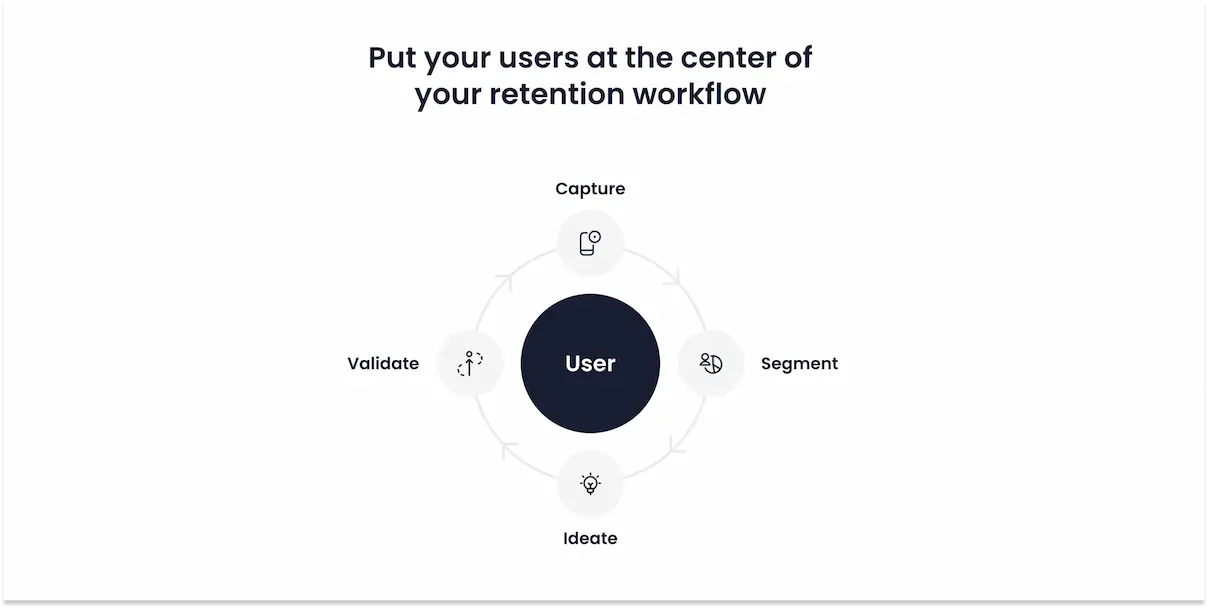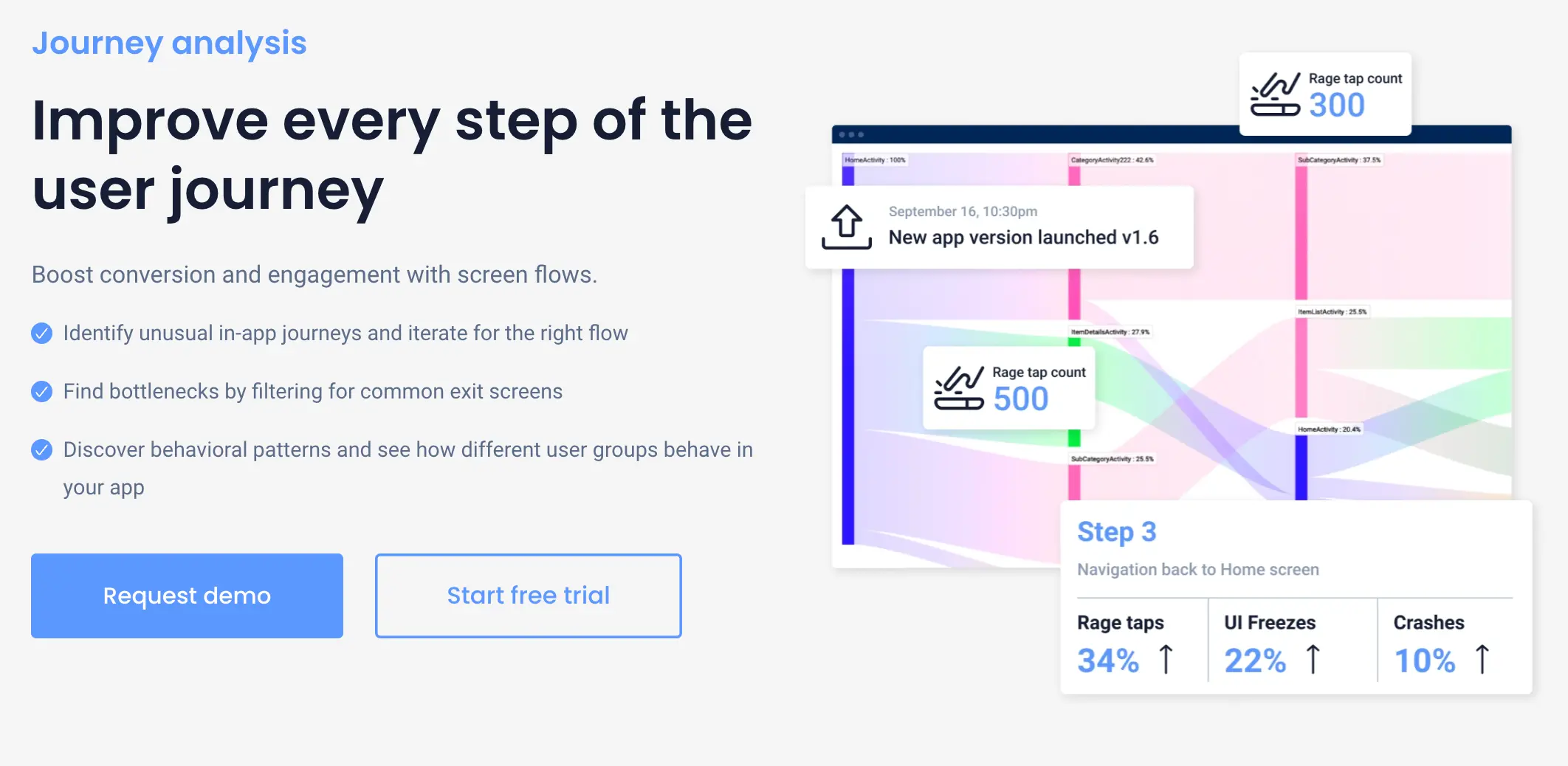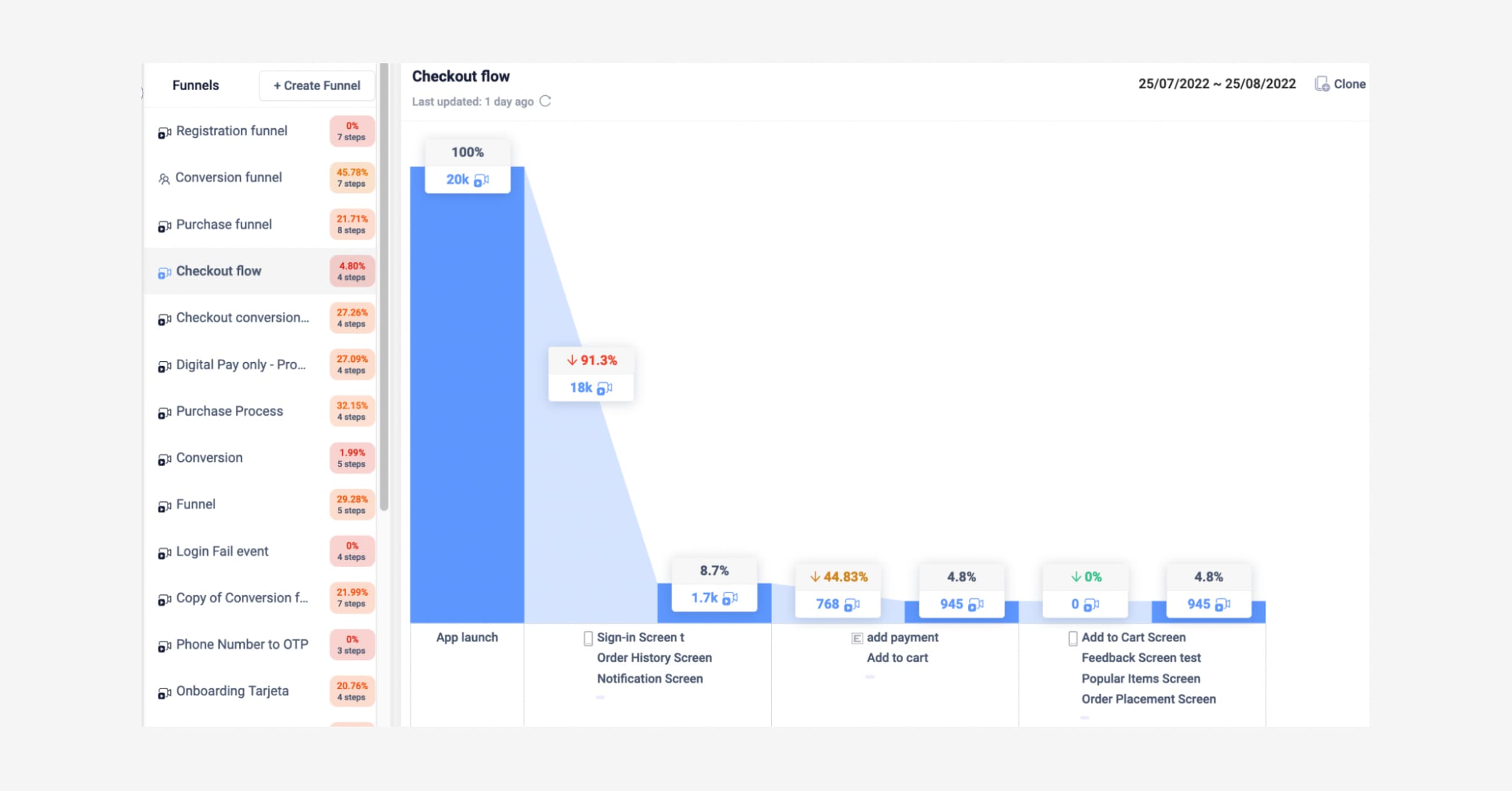Back to blog
5 MIN READ
7 Ways to Improve End to End Customer Experience
PUBLISHED
1 June, 2023

Product Analytics Expert
Every year, customer churn due to poor experiences costs US businesses $1.7 trillion —that’s a lot of money to be leaving on the table.
But what’s the solution? How can we use technology to create a better end-to-end customer experience?
In this UXCam guide, we'll be answering those questions (and more) as we introduce you to seven powerful methods for improving your customer experience—from first touchpoint to post-sale service.
Ready to start building long-term relationships with your customers? Let’s get started
What is end-to-end customer experience?
End-to-end customer experience is a fairly large concept encompassing every interaction a customer or user has with your business during their journey.
In practice, what this means is that every touchpoint a customer has with your company should be measured, benchmarked, improved, and—most importantly—viewed as part of the larger customer experience.

What are these touchpoints, though? That depends on your business, but they could include:
PR
Paid Ads
Blogs
Websites
Word-of-Mouth
Social Media
Reviews
The sum of all these touchpoints—the end to end customer experience—plays a huge role in determining how interested customers are in what you have to offer. And that means it’s worth paying attention to.
Types of customer experiences
Direct Customer Experience: This is the experience customers have when they interact directly with your products and services. It could include anything from using an app or website to visiting a store.
Indirect Customer Experience: This is the experience customers have when they’re exposed to your brand in other ways, like user-generated social content or reviews.
Benefits of a good end-to-end customer experience
It builds brand credibility
A good end-to-end customer experience conveys that you care about your customers and want them to have the best possible experience with your brand. This can help reinforce your credibility in the market and build trust between you and your customers.
It drives user retention
When customers enjoy a positive end-to-end experience, they’re more likely to return and continue doing business with you. This creates a stronger relationship between you and your customers, as well as higher lifetime customer value due to repeat purchases and advocacy.
It generates word-of-mouth recommendation
A good customer experience leads to happier customers who are more likely to spread positive word-of-mouth recommendations surrounding your business. This can be incredibly valuable in helping you acquire new customers.
Seven ways to improve end-to-end customer experience
1. Map customer journeys
Before you can improve something, you need to understand it. That goes for customer experience, too.
Start by mapping key customer journeys around your business—from acquisition to purchase to support. For each stage in these journeys, add the associated touchpoints to your map. For example, if people use your self-service chatbot as part of the purchase journey, include that.

Using UXCam’s User Journeys, you can quickly and easily map key user flows throughout your app—no matter how complex. The result is a visual representation of the many ways people use your app that you can use to plan and optimize your customer experience.
2. Identify bottlenecks
Customers should be able to move through your business—from initial contact to purchase—without getting confused, frustrated, or losing interest. That means you need to figure out where the biggest obstacles in your user flows are so they can be smoothed over
The most reliable way to do this is through a funnel analysis—a process that identifies the drop-off points throughout the customer journey.


For an example of this process in action, let's take a look at UXCam's Funnel Analytics. You can use this feature to zoom in on key user flows to see what percentage of users drop off. Larger-than-usual drop-offs are potential obstacles that you can look into.
3. Use the right data and analytics tools
Earlier, we mentioned the importance of measuring, benchmarking, and improving customer touchpoints—something that's pretty hard to do without data and analytics tools.
Data-driven insights can help you better understand how customers interact with your business and where improvements are needed. One way to start gathering customer data is by installing a mix of analytics tools, such as Google Analytics and UXCam, to your website and mobile app.


4. Choose the right KPIs
This is really a continuation of the last point: Now that you have a tool to collect customer data, you need to choose the right KPIs to measure.
There are tons of customer experience KPIs to choose from, including:
Customer Retention Rate: How many customers are sticking around?
Net Promoter Score (NPS): How likely are users to recommend your product/service?
Time to Resolution: How quickly are customer service inquiries being answered?
Average Time Spent on Page: How long do users stay on your website/app?
Want to learn more? Check out our blog post covering 50+ important product metrics and KPIs.
5. Personalize, personalize, personalize!
Personalization may feel like a buzzword, but that doesn't make it any less important.
Don’t believe us? Consider the fact that 60% of customers will become repeat customers following a personalized experience.
No matter what industry you're in, you should be taking steps to customize the customer experience for each individual user. This could range from targeted ad campaigns to personalized product recommendations.
6. Optimize for quality, not quantity
Remember—quality trumps quantity when it comes to the customer experience.
Instead of focusing on acquiring as many customers as possible, focus on delivering an exceptional experience to each customer you do have. Tasks like providing efficient customer support and personalizing messaging can help your customers feel more valued, which will, in turn, increase customer loyalty.
7. Use gamification to celebrate customer success
Gamificationis a powerful approach to enhancing the customer experience by infusing a sense of entertainment and enjoyment.
You can create a dynamic and engaging user experience that fosters stronger customer loyalty by integrating challenges, recognition, and incentives for various activities such as:
Completing tasks & tutorials
Making purchases
Referring friends
Leaving reviews
With the proper execution, gamification can be a powerful tool in helping you not only retain existing customers—but also attract new ones.
Quantify your customer experience with UXCam
At the end of the day, improving end-to-end customer experience boils down to providing personalized, consistent interactions and making sure all touchpoints are optimized.
And with UXCam, you can do exactly that.
UXCam's funnel analysis tool helps you identify user flows, spot opportunities for improvement, and better understand how customers interact with your product. Plus, UXCam's session replays, heatmaps, and analytics give you detailed insights into user behavior, so you can tailor the customer experience and ensure it's optimized for success.
AUTHOR

Tope Longe
Product Analytics Expert
Ardent technophile exploring the world of mobile app product management at UXCam.
What’s UXCam?
Related articles
App Analytics
Mobile App Tracking: Practical Guide & Best Tools [2026]
The best tracking tools for mobile...

Jonas Kurzweg
Product Analytics Expert
App Analytics
Top Analytics SDKs 2026
Pick the right analytics SDKs to improve your app's...

Jonas Kurzweg
Product Analytics Expert
Product best practices
8 Best UX Analytics Tools and Software We’ve Tested 2025
A good UX design is key when it comes to user satisfaction. Learn about five of the best UX analytics tools you can use to get valuable insights about user...

Jonas Kurzweg
Product Analytics Expert


